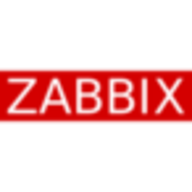

Zabbix and InfluxDB compete in the open-source monitoring and data handling category. Zabbix seems to have the upper hand due to its extensive monitoring capabilities and flexibility.
Features: Zabbix offers robust monitoring capabilities featuring low-level discovery, auto-discovery, and advanced templating for a wide range of environments. Its scalability and customization are frequently highlighted in user reviews. InfluxDB is valued for its strong performance in handling time-series data and seamless integration with tools such as Grafana, though it is traditionally focused on data handling rather than monitoring.
Room for Improvement: Zabbix can improve its user experience, UI intuitiveness, and automation, with many users requesting better reporting functionalities. InfluxDB faces challenges with high-cardinality data and could enhance its UI, integration capabilities, and develop more built-in features for ease of use across varied environments.
Ease of Deployment and Customer Service: Zabbix is known for its solid on-premises deployment and benefits from strong community support, though direct technical support can be challenging. InfluxDB provides versatile deployment with on-premises and hybrid cloud options, focusing heavily on the integration capabilities that suit diverse setups. It receives less emphasis on structured customer service interactions than Zabbix.
Pricing and ROI: Both Zabbix and InfluxDB provide free versions, effectively lowering initial costs. Zabbix's lack of licensing fees leads to significant ROI for users transitioning from costly commercial solutions. InfluxDB, although free at the start, may see additional costs during scaling due to its recent pricing changes, impacting its cost-efficiency.
| Product | Market Share (%) |
|---|---|
| Zabbix | 11.4% |
| InfluxDB | 0.4% |
| Other | 88.2% |


| Company Size | Count |
|---|---|
| Small Business | 4 |
| Midsize Enterprise | 3 |
| Large Enterprise | 6 |
| Company Size | Count |
|---|---|
| Small Business | 53 |
| Midsize Enterprise | 23 |
| Large Enterprise | 34 |
InfluxDB is open-source software that helps developers and enterprises alike to collect, store, process, and visualize time series data and to build next-generation applications. InfluxDB provides monitoring and insight on IoT, application, system, container, and infrastructure quickly and easily without complexities or compromises in scale, speed, or productivity.
InfluxDB has become a popular insight system for unified metrics and events enabling the most demanding SLAs. InfluxDB is used in just about every type of industry across a wide range of use cases, including network monitoring, IoT monitoring, industrial IoT, and infrastructure and application monitoring.
InfluxDB offers its users:
InfluxDB Benefits
There are several benefits to using InfluxDB . Some of the biggest advantages the solution offers include:
Reviews from Real Users
InfluxDB stands out among its competitors for a number of reasons. Two major ones are its flexible integration options and its data aggregation feature.
Shalauddin Ahamad S., a software engineer at a tech services company, notes, “The most valuable features are aggregating the data and the integration with Grafana for monitoring.”
Zabbix is an open-source monitoring software that provides real-time monitoring and alerting for servers, networks, applications, and services.
It offers a wide range of features including data collection, visualization, and reporting.
With its user-friendly interface and customizable dashboards, Zabbix helps organizations ensure the availability and performance of their IT infrastructure.
We monitor all Network Monitoring Software reviews to prevent fraudulent reviews and keep review quality high. We do not post reviews by company employees or direct competitors. We validate each review for authenticity via cross-reference with LinkedIn, and personal follow-up with the reviewer when necessary.